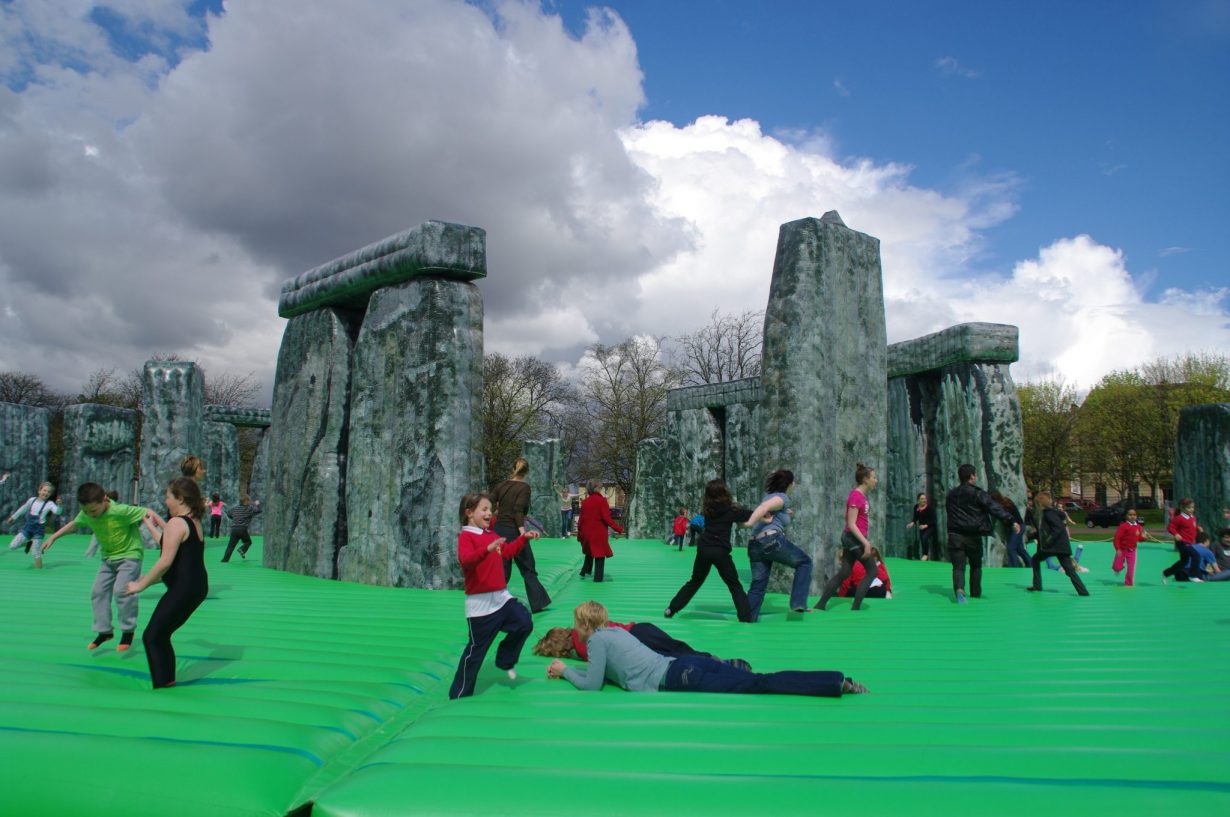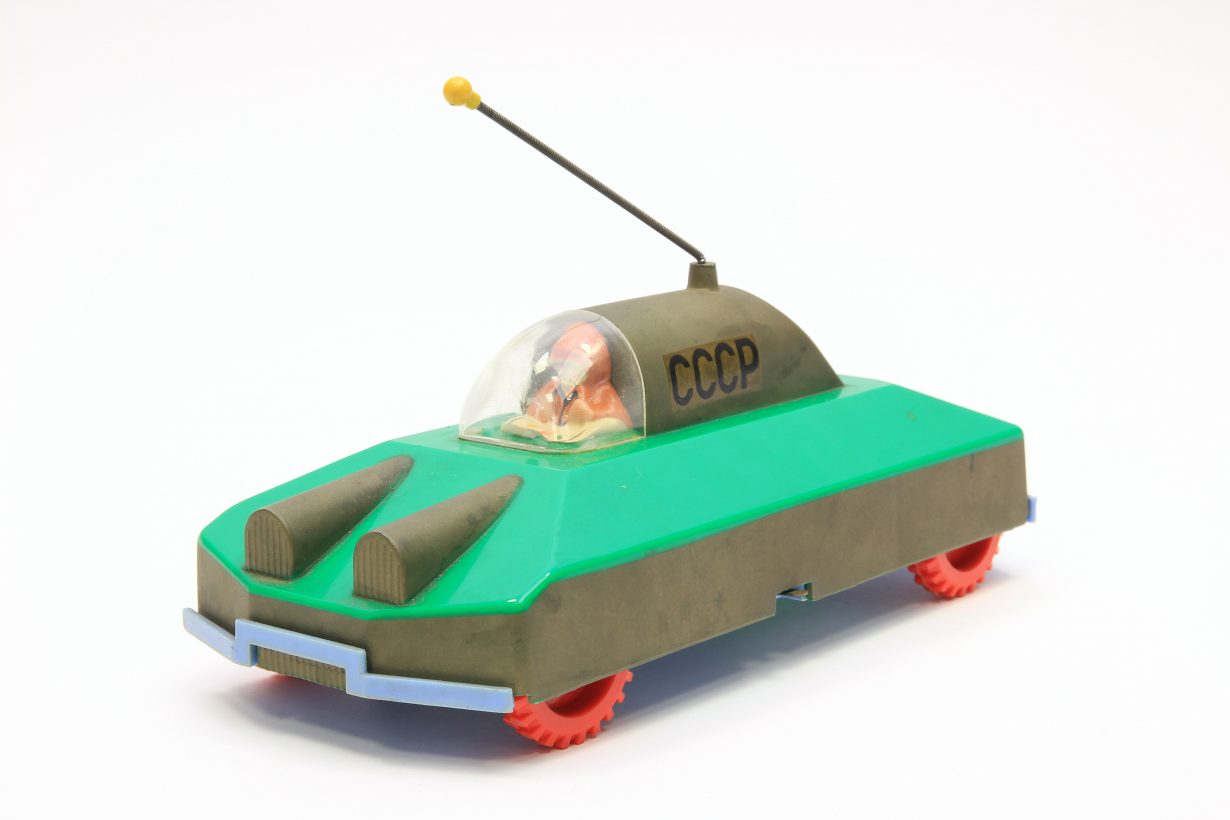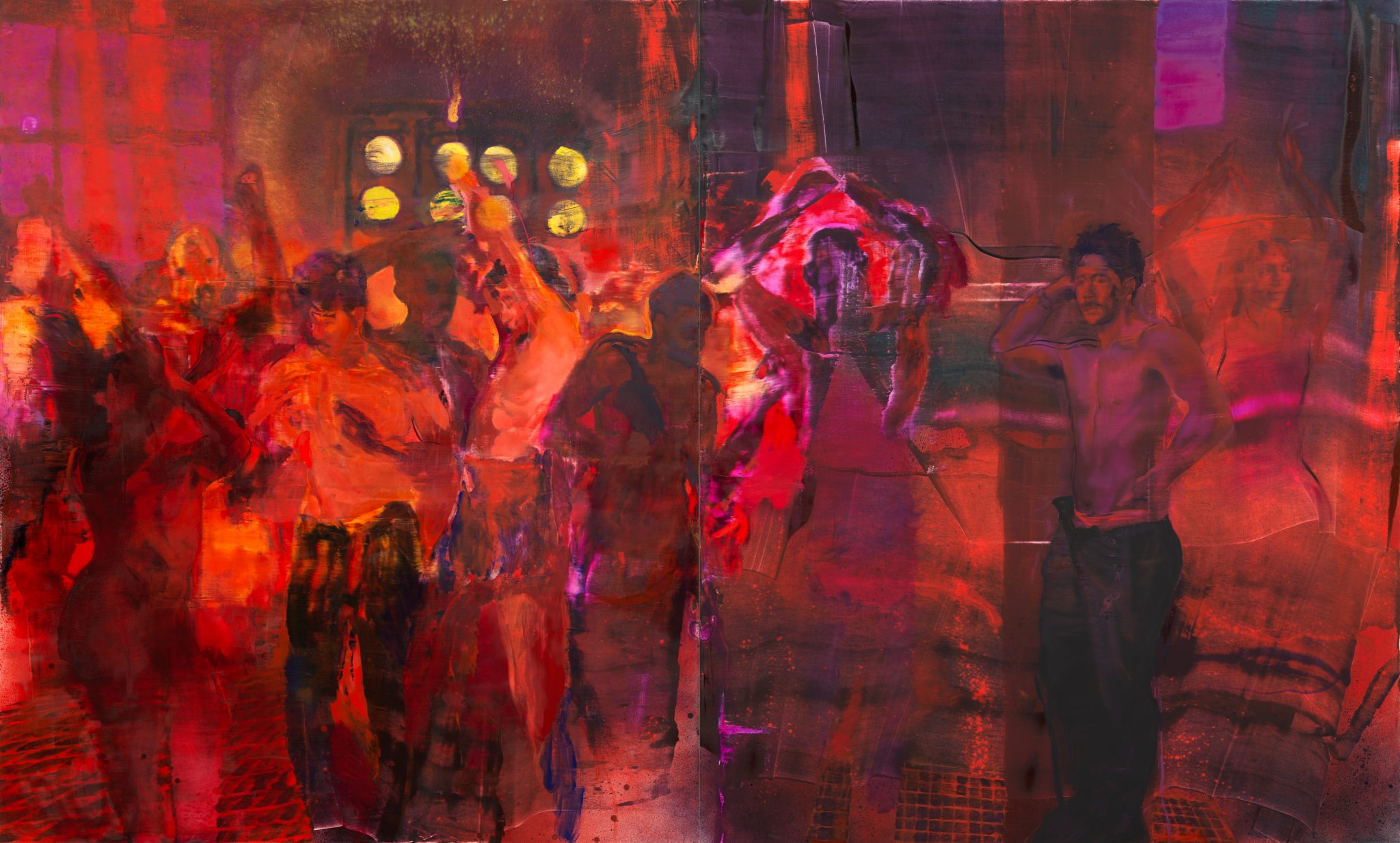Art tends to treat enjoyment as something to be dissected and analysed – or, more plainly, as something bad
‘This can’t be art, there’s too much fun!’ So runs the headline of a recent article in The Guardian, paraphrasing the Israeli-born artist Doron Langberg speaking about his hedonistic ‘New Queer Intimist’ paintings, the latest of which compress a big night out: sweaty dance-floors, nude men in bed, beachy comedowns. ‘The only thing missing’, the article’s author asserts, ‘is the music’. Well yes, but also the sex, the drugs, the feeling of sand on skin at sunrise. The paintings are pleasurable as paintings, but the fun was someone else’s. That Langberg’s work is being presented at Victoria Miro, London, made me think in turn of an earlier show there: Elmgreen & Dragset’s installation Too Late (2008), the glittery leftovers of a real party held before the show opened. That Guardian headline was, in a way, on the money, because art has a strange, distanced relationship to ‘fun’. It’s to be refracted, referenced, but not experienced; something, that is, to be taken seriously.
I remember, sometime towards the end of the 1990s, being at cross-purposes with an interviewee, the Scottish artist Kerry Stewart – then semifamous for sculptures of pregnant schoolgirls, sleeping nuns, etc. I wasn’t sure what she was up to, we were exasperating each other while trying to do our jobs, and finally she burst out, apropos her art, “But don’t you think it’s funny?” That had not occurred to me, as a golden key to her work or anyone else’s. I quite liked William Wegman’s deadpan photographs of his dressed-up Weimaraners, but the fact that they were amusing – and that he made purchasable calendars of them – seemed to disqualify them as ‘serious’ art, a risk David Shrigley also blithely runs. I liked standup comedians who sneaked seriousness into humour, but I hadn’t noticed it working the other way around. At least not in visual art. Meanwhile, I was talking to Stewart in the heyday of relational aesthetics, and while plenty of artists were concurrently (and derivatively, if you knew your first-wave Conceptualism) presenting art as a sociable situation, these never felt very enjoyable unless there was food involved – and even then it might depend on who was cooking it. Art’s relationship to enjoyment seemed then, and still seems now, primarily to involve bracketing it as a concept and losing something vital in transition: like certain alcoholic drinks crossing water, like an art band trying to make good music.

Off the clock – at the bar, at the club, at someone’s flat afterwards – artworld people are very capable of having fun, sometimes notoriously so. In a gallery, not so much. Outside of the famously cringey sight of art folk dancing to DJs, which someone should really produce a YouTube supercut of, we’re seemingly chary of a good time because art, pace Langberg, isn’t supposed to dabble in lightness. Also because if we have to do something to have said fun we might get it wrong and embarrass ourselves, lose the circumspect froideur this milieu still prizes as an attitude. (The solemnity of contemporary art has, in recent times, been capitalised on by the likes of teamLab and Meow Wolf, whose immersive, entertainment-centric installations for larger audiences don’t get the balance right either, tending to displace the art quotient.) When participatory fun is on the table, an artist must make sure it’s near impossible to misinterpret, as in Paola Pivi’s slide for the first Frieze art fair, Untitled (Slope) (2003), or Jeremy Deller’s bouncy-castle Stonehenge, Sacrilege (2012).

And then, of course, we should ponder what those works are really saying, about bread and circuses and heritage or whatever, because we’re intellectuals. Like the Bible says, when we become adults, we put away childish things; and if we get them out again, we analyse them, tap their semiotic resonances, put them under glass. In Berlin right now, for example, the American artist Mark Dion has a display up at the Museum Nikolaikirche, Delirious Toys (2023), for which he researched the 70,000-work toy collection of the Berlin City Museum. The resulting installation, though ostensibly inspired by Dion’s own seven-year-old son’s freeform mixing of his dinosaur toys with astronauts, etc, is a plethora of old toys, freed from the usual taxonomies and chronologies of toy museums, that asks us to ‘take a critical look’ at how human attitudes to the world are encoded in the playthings that shape young minds, and how rigid thinking might be escaped. And, of course, these historical artefacts are not to be toyed with, by you or your little ’uns.
In April, meanwhile, in the same city, an 11-week ‘artistic amusement park’ entitled Radical Playgrounds opens in the parking lot of the Gropius Bau. This programme, organised by the capable Polish curator Joanna Warsza and German architect Benjamin Foerster-Baldenius – no artist list as yet – appears to draw on highminded theorisations of play as a mode of togetherness that breaks down barriers and conventions, while also sounding highly au courant: ‘You are invited’, the advance blurb reads, ‘to dig in a decolonial sandpit, sit on an indigenous swing or spin on an entropic carousel.’ This will be a place, the organisers say, where we are ‘free to try things out and make mistakes safely’. Perhaps it’ll transpire that, as The Guardian might mistype it, ‘this can’t be fun, there’s too much art!’ But here’s another reminder that contemporary art, having gamely annexed almost everything else, has territory left to claim or to build: a space where art and fun-and-games somehow, miraculously, don’t cancel each other out. Are we having fun yet? If not, there’s still work to do.
